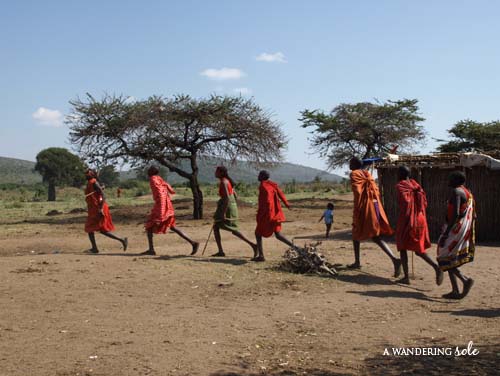
If you missed Part 1 of this post, go get caught up and then come back to read Part 2, focusing on the Masai village.
As we said our good-byes to the majestic Masai Mara, we only had a short drive until we were at a Masai village. We paid an entry fee which meant a group of elders took us on a tour and explained the Masai lifestyle. We were free to take any photos we wanted, which was nice (I’m always paranoid about taking photos of people when I travel so with open permission, I took advantage).
The Chief’s son headed up our tour and started with a background on their heritage. The Masai people are semi-nomadic and move about every nine years. They live in simple huts, constructed of sticks and a mixture of mud and cow dung. So, when they move, the Masai can easily reconstruct their homes. They marry within their own village (this fact was a bit depressing because with only about 150 people, that means your picks are limited). Before we entered the village, the men showed us a traditional dance, followed by a jumping contest. Often times, when you see photos of Masai men, they are huddled in a group with one or a few of them jumping. Traditionally, this dance called adumu, is performed during a coming of age ceremony. However, it is big a deal that you can jump high, so I’d venture to say they practice a bit more often than that.
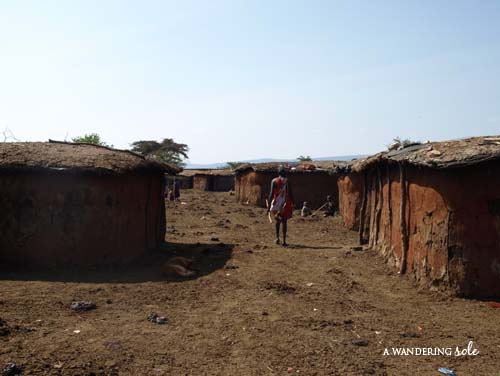
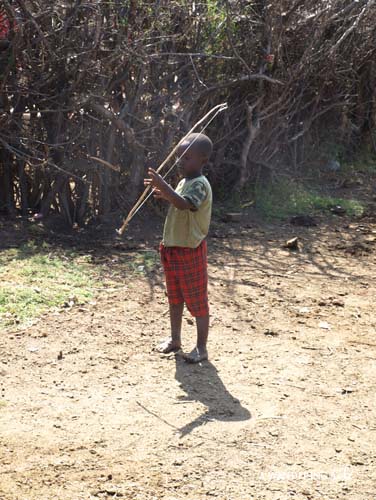
We entered the gate into the village, and one of the first things I noticed was the different cloths people were wearing. Sure, they were mostly red but there were varying patterns. Interestingly, each family in a Masai village has their own cloth, equivalent to a Western Coat of Arms. You’ll also notice they are heavily decorated in jewelry and many have stretched earlobes. They typically wear sandals made from old tires.
Once inside the village, our first stop was in one of the houses. There are no windows in these huts so it’s very dark. Therefore, I assume you’d never spend time in here during the day unless you were ill. It was literally a dirt floor, with beds along the outer edge and a gas lantern in the center. The beds were a leather animal hide on top of straw.
Happy to be back in the sunshine, we went to the center cattle ring. Here, we learned how to start a fire old-school (it’s tough!). Then, as we stood around this pole in the center, we learned that this is where males are circumcised. When they hit their teens, they are circumcised in public with no anesthetic. They are not allowed to scream, as this brings shame to their family. Female circumcision was traditionally performed but is now illegal and less commonly practiced., This was not discussed on our tour, so I can only hope that they no longer performed it. When boys reach manhood, they are sent out in the wilderness for several months to fend for themselves. They have basic weapons and must hunt and survive on their own. Killing a lion is considered one of the biggest achievements during this time.
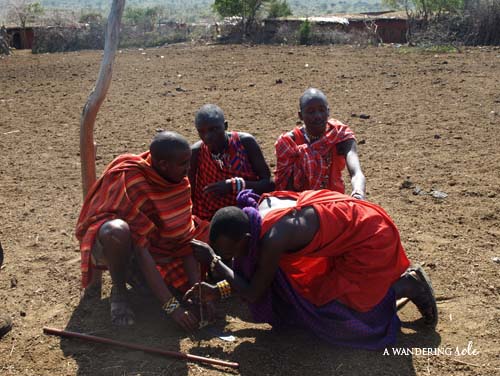
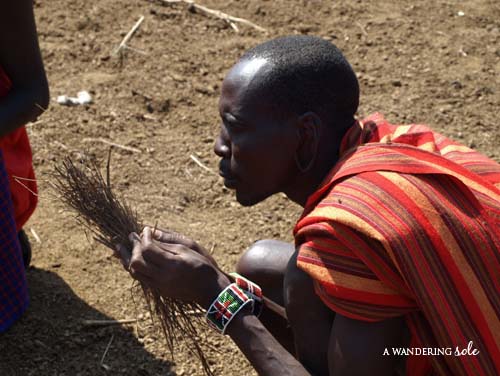
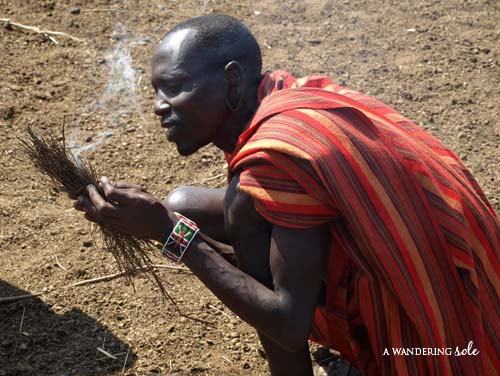
After our time in the cattle ring, a few women performed a simple song and dance. I was forced to join in but really all I had to do was sway my arms as I stood in line.
Then we were set free in a mini craft market which was overwhelming. Masai rely heavily on trade and were eager to trade for tshirts, flashlights, or anything else they deemed useful. Of course, money is always handy, but not necessarily their first choice since they have limited access to purchase goods. We traded a few shirts for some jewelry, made a couple of purchases, and were on our way.
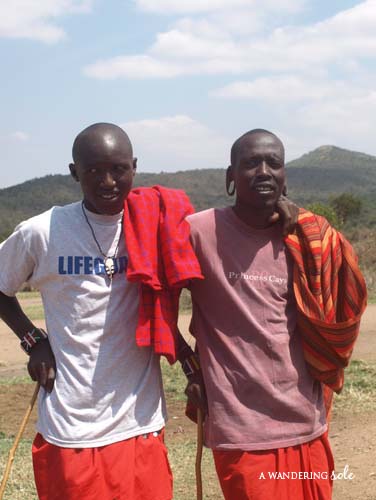
Visiting the Masai village was one of my favorite cultural tours I have done. They provided detailed information on their way of life, were friendly and open to questions, and I felt that for the most part, everything they said and did was genuine to their way of life and not just for show. When the men did the jumping dance at the beginning, they were all eager to join in and laughed when my friends showed that ‘white men can’t jump’. Our stop at the Masai village was icing on the cake to this fantastic safari.
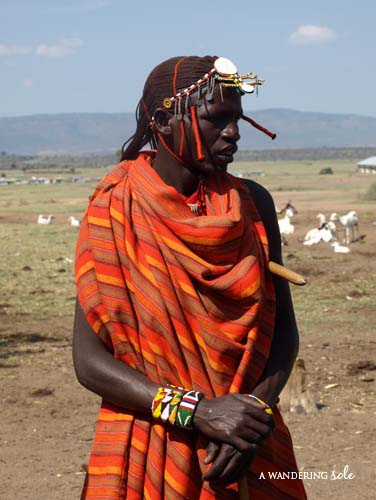
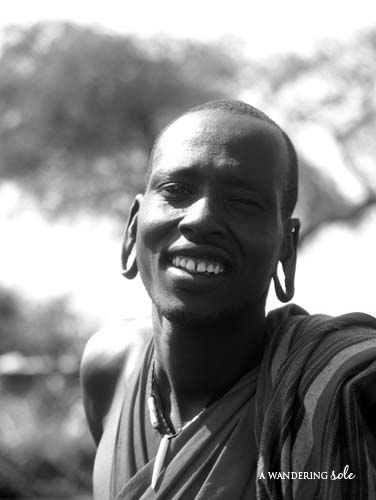
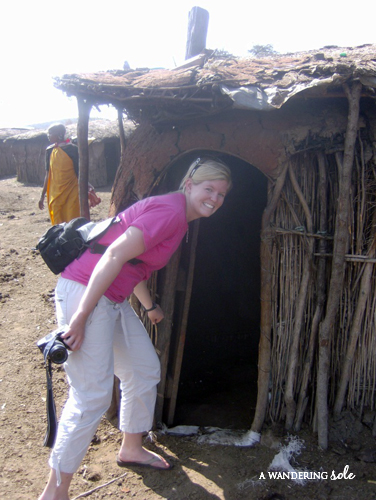
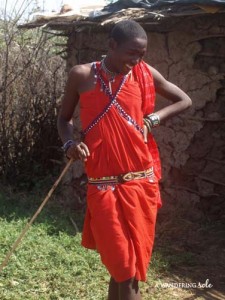
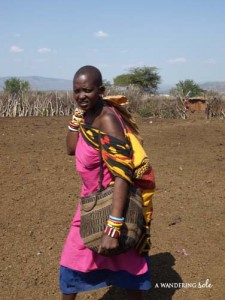
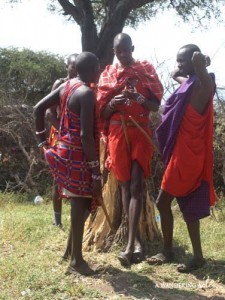
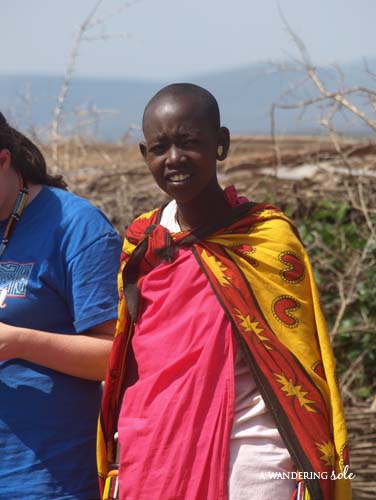
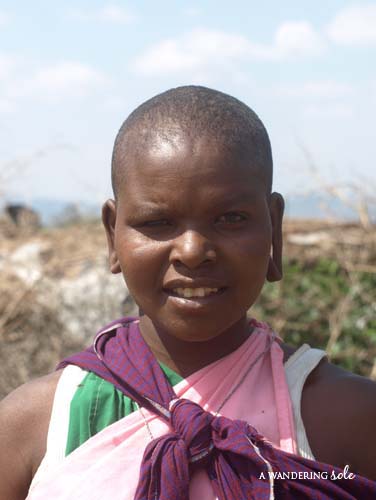
I love the idea of trading and bartering for goods. The whole experience sounds amazing.
Jill- It was a fantastic experience. Highly recommend it!
OK, all I can focus on is how painful it must have been to get their ears lobes to stretch that far!!
Haha, I can only hope that they slowly stretched them over time. I had a discussion with them about their ears actually and they brush it off like “ain’t no thing” (only they didn’t quite say it like that)
Did you get a chance to drink the maasai cocktaill (blood and milk)?
Hi Ernest, I did not try a Masai cocktail. While I’m open to trying new food & drink, I’m not sure I could handle drinking blood. Though, the milk would sweeten it at least.
Whose blood would it be? Oh my…
I recently discovered your blog through the Gen Y Travel carnival, and I’m enjoying the photos. I think the 2nd one in this post is my favorite, so radiant!
This has got to be one of the coolest experiences EVER!!! Definitely on my BL. What a unique and interesting culture.
Andi, It should definitely make the BL!
I’d like to learn how to make fire!! Like to think I’d have the patience to be able to do it!
Heather,
I was terrible at starting a fire. I thought it was so hard! Def. requires patience!
So happy to have read these two posts about your experiences in the Masai village. I will be heading to Africa for the first time, Kenya specifically, to work in a Masai village.
Thanks for sharing your experience. I’m feeling pretty excited now.
Wow. What a wonderful experience, and your photos are beautiful!